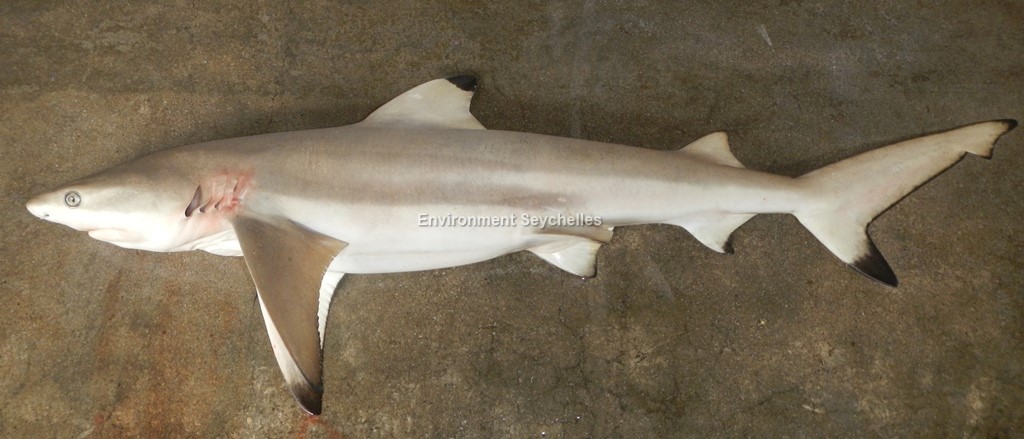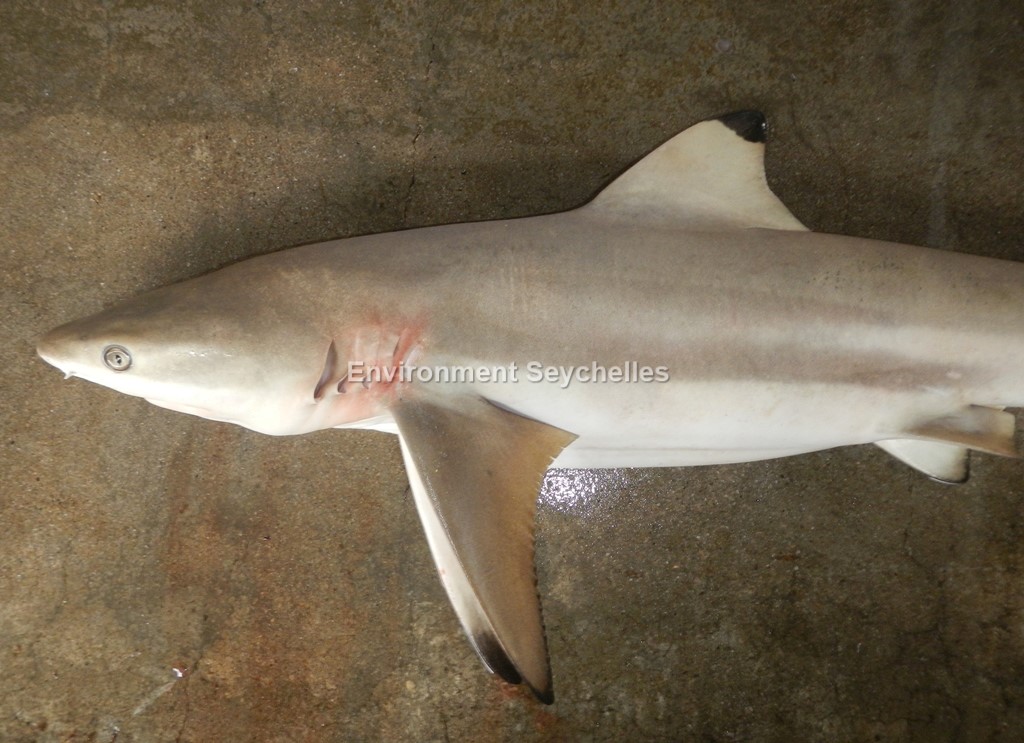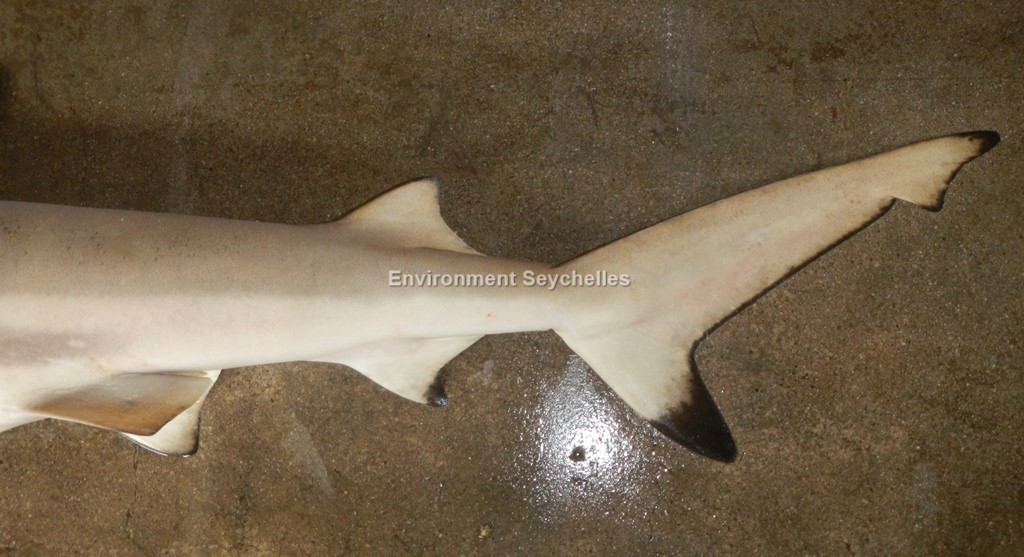Description:
Medium-sized shark with short bluntly-rounded snout, light brown to brown-grey dorsally and white ventrally with conspicuous white band on flanks. Fins with striking
black tips often further emphasised by proximal white bands on D1, D2, pelvic and anal fins.
Fins: D1 large, falcate, apex sharply rounded or pointed. Striking black tip emphasised by white band below. Origin over pectoral free rear tips. D2 relatively large.
Origin over anal fin origin. Black tip often underlined by white band. Short free rear tip. No interdorsal ridge. Pectorals large, narrow and falcate, apices narrowly
rounded or pointed with distinct black tips. Pelvic and anal fins with black tip sometimes emphasised by proximal white band. Caudal ventral lobe has conspicuous
black tip, dorsal lobe with black trailing edge.
Head: Short bluntly rounded snout, quite large horizontally oval eyes, gill slits medium-sized. Nostrils large with elongated bluntly pointed anterior lobes. Upper
labial furrows short and inconspicuous.
Size:
Born 33-52cm TL. Mature: Male 90-100cm TL, Female 95-112, Maximum <200cm TL.
Habitat and Ecology:
Viviparous 2-4 pups per litter after long (possibly up to 16 months) gestation. Inhabitant of shallow waters around coral reefs and reef flats. Feeds on small
teleosts and invertebrates.
Fishery Status:
This species is not protected. It is however illegal to fish for sharks with nets (Fisheries Act, Reg 16.c). It is subject to the hand line fishery and presumably
in the past extensively in the net fishery. It is a very rare component of the artisanal catch due to it having been largely extirpated from the Mahé plateau –
though it is known to still occur in low numbers in a few specific locations. It remains much more common in the Amirantes and southern atolls.
Notes:
The very shallow water and coastal nature of its habitat makes it very prone to fishing pressure.
References:
Ebert, D.A. et al (2013). Sharks of the World – A fully illustrated guide. Wild Nature press ISBN 978-0-9573946-0-5
Fisheries Act 2014. Prohibition of net fishing of sharks, Reg. 16c of 1st August 1998. (Carried over from the 1986 Fisheries Act as per Fisheries Act 2014 para 79:
Savings and Transitional provisions).
Froese, R. and D. Pauly. Eds. (2019). FishBase. https://www.fishbase.de/summary/877 (26/05/19).
Nevill, J.E.G. et al (2015). An identification guide for the sharks of the Seychelles Artisanal Fishery.
Simpfendorfer, C. et al (2020). Carcharhinus melanopterus. The IUCN Red List 2020: e.T39375A58303674. https://dx.doi.org/10.2305/IUCN.UK.2020-3.RLTS.T39375A58303674.en.
(23/09/21).
Citation:
Nevill, J.E.G. (2019). Carcharhinus melanopterus, Blacktip reef shark. Seychelles Seatizens. www.seatizens.sc. https://seatizens.sc/species/carcharhinus-melanopterus-quoy-gaimard-1824/ (Updated 23/09/21).




There are no comments